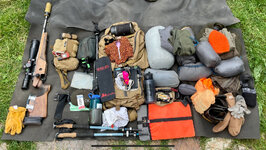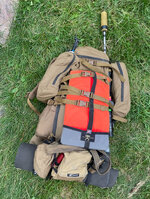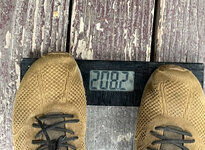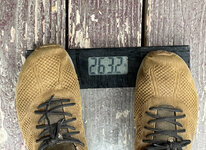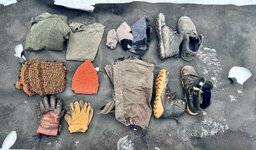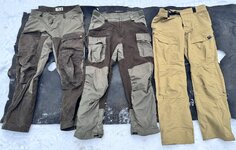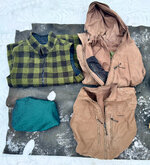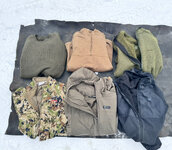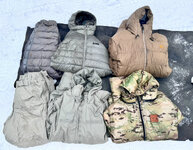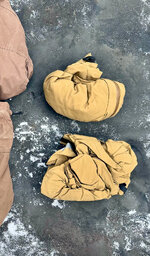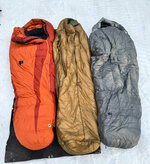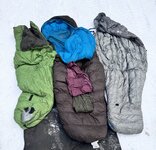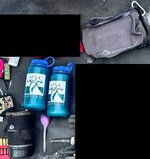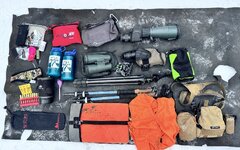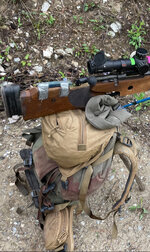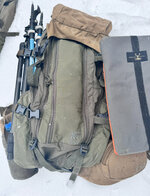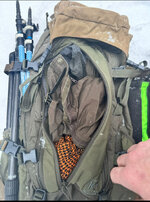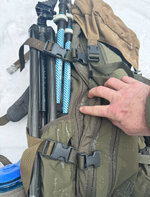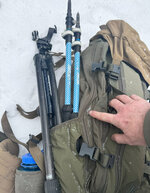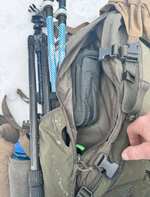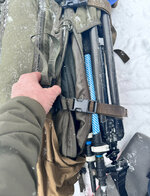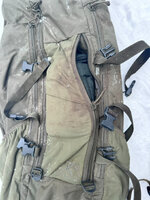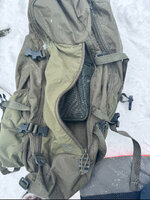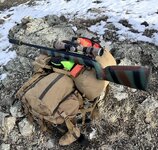Cont…
Purcel Trench Packers Grill was a gift from a fine figure of a man, its light and great for grilling meat/fish on while hunting.
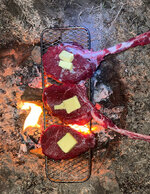 Seat. Stealthy Hunter Sit pad @Ryan Avery
Seat. Stealthy Hunter Sit pad @Ryan Avery gave this to me last year. I’ve been using the same foam sit pad from Walmart for probably 15 years. He liked this one, and said it’s kind of silly to say because it’s just a foam pad- but it’s great. Having used it for a full season of hunting and a bunch of shooting, it’s great. It’s water resistant/proof, about the right density, light, straps to the pack easily, you can kneel one it, sit on it, use it as a cutting board/food board- its how a sit pad should be.
Orange vest have had since I was a teenager.
Hiking sticks are Cascade Mountaim Tech or Walmart branded CMT’s. Carbon fiber with cork handles. They kast as long as any made- I think one person has broken one pole in a hard fall, out of dozens of sets for 7-8 years used constantly. I want a lightish pole that collapses, that has a cork handle, preferably without finger grooves. The CMT are about as close as any come.
Shooting bag- S2H Molinator. I don’t or haven’t carried a shooting bag while hunting because- they all are a heavy (pun) compromise. Either they are good for shooting but heavy and bulky, or they are light, but suck for shooting.
I have been looking for a bag to clip onto the pack for a front rest as I do not use a bipod generally. The pack works great except for steep side hill shooting and then the rifle wants to slide downhill, so you have to build up the pack or hold the forend. I have thought about using duct tape and foam to build a U shaped rest in the pack ala old school sniper rucks, but then it wouldn’t be removable and would be heavier than I wanted. Enter
@Ryan Avery and Jake with Shoot2Hunt last fall. Started using this for shooting in the range as a front bag, it works very well and is stable, though very light. Didn’t take it hunting for most of the season, though should have, but did in the last hunt. Routing the center compression steps of the pack through the handles kept it in place, and it worked perfectly for two elk. I dislike giving Ryan or Jake credit… but it’s a really good front bag for field use. I’m going to request a strap modification for pack use, but it still works great as is.
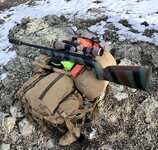 Spotting setup:
Spotting setup:
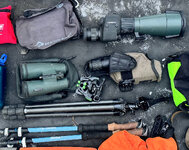 Tripod- is a Slik CF 634
Tripod- is a Slik CF 634. Very good balance of weight and stability. Of what I’ve used for backpacking it is what I prefer. I don’t prefer the twist lock system as it is slow, but it does work. The head is a simple ball head off of a Vortex Summit (I think it was called)- that tripod had the fastest and best leg locking mechanism I’ve used, but they kept breaking. The bino adapter is a Swarovski.
15x56mm Swarovski binos- Whatbibtaje and use 95% of the time now. Glassing and slotting shots is so much better/easier than with a spotter. The glass Swarovski’s is fantastic, but they are fragile binos. I baby observation device sad much as possible- always in a padded case and never slamming them down in the pack, etc. even still I average 18 months (fall, spring, fall hunting seasons) between needing to go back and be serviced due to failure. Swaro repaired a busted focus wheel, collimation, and eyepiece in Sept of ‘22, and the focus wheel already has backlash and gets gritty/clicky at times, also they are losing collimation a bit randomly- all of which is a precursor to failure. This is not isolated/ I am around 10-12 that gets used, and they all have to go in for service way more than any other “alpha” class binos or spotters. Great glass, but fragile. Most have switched to Meopta B1 Plus 15x binos and I still don’t know anyone that has needed service after 3-4 years. They also have great glass, and 100% are a better choice for most.
What is needed is a great 15x56 or 60mm bino with a “L” shaped mil reticle in the lower left or right FOV.
Swarovski STR 80 25-50x80mm spotting scope with electronic reticle. The glass is top shelf of course, but as a general field spotter it has compromises- too much low end mag, and extremely short eye relief.
First, 25x is way too high for a field spotter- quickly setting up and finding animals that are moving requires a large FOV, and spotting shots does not require extremely high magnification- quite the opposite. 15x or so on the low end would be about right. As for high end mag, most of the time due to mirage nothing over 30-40x is unusable. For sheep and counting rings, etc., yes high mag is good, but more than likely it would be a different spotter altogether.
The real issue as a field spotter is short eye relief- and this applies to all Swarovskis and almost all spotters in general. To get a full field of view inside, you have to touch or nearly so the eyepiece- some have to be jammed inside your eye socket. First it’s stupid and uncomfortable. Second, it causes image shake from touching it. This short eye relief is the primary reason I believe that people like angled spotters. It sucks and once people see it using others with better eye relief, most can’t unsee it.
Leupold Mark 4 12-40x60mm with Horus reticle. Having used about every spotter on the market this is overall the best field spotter right now readily available- the Hensoldt Spotter 45 was very good. The 12x on the low end mag is great for quickly setting up and finding animals, 12-18x is good for spotting shots, and 30’ish mag is good for identification and at least in the Horus reticle versions- the glass is quite good. Side by side with Swaro and Kowa’s, there hasn’t been a time where a point or animal couldn’t be identified at 30-40x within, and not the Leupold.
I have used and seen used a bunch of these spotters, and this one had been straight abused for over a decade purposely trying to get it to fail, before the eyepiece came out last spring. I put it back in and used it until mid summer, then sent it back to Leupold. While it was gone I used the Swaro STR80 and missed the Leupold every time. Side by side there is no situation for all a round field use where I would, or do choose the Swaro above, or other normal spotting scope over the Mark 4.
An “Alpha” level spotter designed similar to this with a “L” shaped mil reticle in the lower left or right of the FOV would be fantastic.
Phone adaptor- This is just a universal adapter that I have used for a few years. Waiting to find one that I don’t have to take the case I use, off of the phone for.
Bino LRF and Bino pouch:
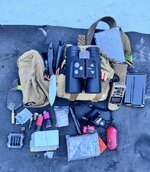
Binos are Revic BLR10b laser RF. Bino pouch is a modified Stone Glacier with attached mag and weather meter pouch and GP pouch. As you wear it looking down, and the right side is the GP pouch. It holds a spare round, lighters, fire starting kit, water purification tabs, knife sharpener, spare batteries, headlamp, signal mirror, and lens pen. Also in the pouch is an “emergency bag” which is only opened in a true emergency. Between the GP pouch and main bino bag is a knife- in this case a CS Canadian Belt knife, and a InReach Mini. Then moving left, the main bino, behind it in the back pockets is a DA and quick mil card, and spare ear plugs, and under it is a TQ. Between Bino and mag carrier is chapstick. Finally all the way left is a spandex mag pouch and weather meter pouch.
Packs
Exo K4 7200 on left and stone Glacier R3 7900 with side bags on right.
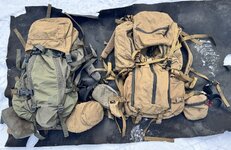
I have more “high end” packs than most- 5-6 Kifarus, 6-7 Mystery Ranches, 4 SG frames and 5-6 bags, 2-3 Hill People Gear packs, multiple Exo K3 and K4’s with all three larger bags, plus a variety of normal hiking packs. Have owned and used a lot more. I use and try new packs basically nonstop, but for my use and most that I am around, it’s mainly the SG and Exo packs now with some caveats.
This one will be a bit long because I get more questions, and there are more arguments and hate over packs than about anything- people get really emotionally invested in certain pack brands, generally without a deep experience base of the rest of the market, and certainly without seeing a bunch of people use them side by side to gauge a general consensus.
An explanation of bag design and use. With a focus on western maintain hunting, primarily later seasons rifle hunting. I and those I generally hunt with want a bag that allows necessary items to be accessed quickly and without getting in the main bag, or undoing a bunch of the main compression straps. For instance access to- tripod and spotter/binos, puff jacket and pants, rain suit, and sit pad. Don’t want to undue the main straps to get those items, and certainly not opening the main bag. Also, side water bottle pockets that are deep enough that a Nalgene doesn’t get pushed out of the pocket when you set the pack down. This does not mean exterior pockets everywhere or add on pockets, aka most newer Kifarus.
Exo K3 6400- 25-30 animals packed out.
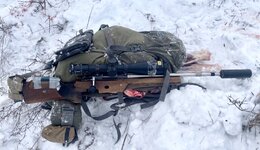
Tbc….

